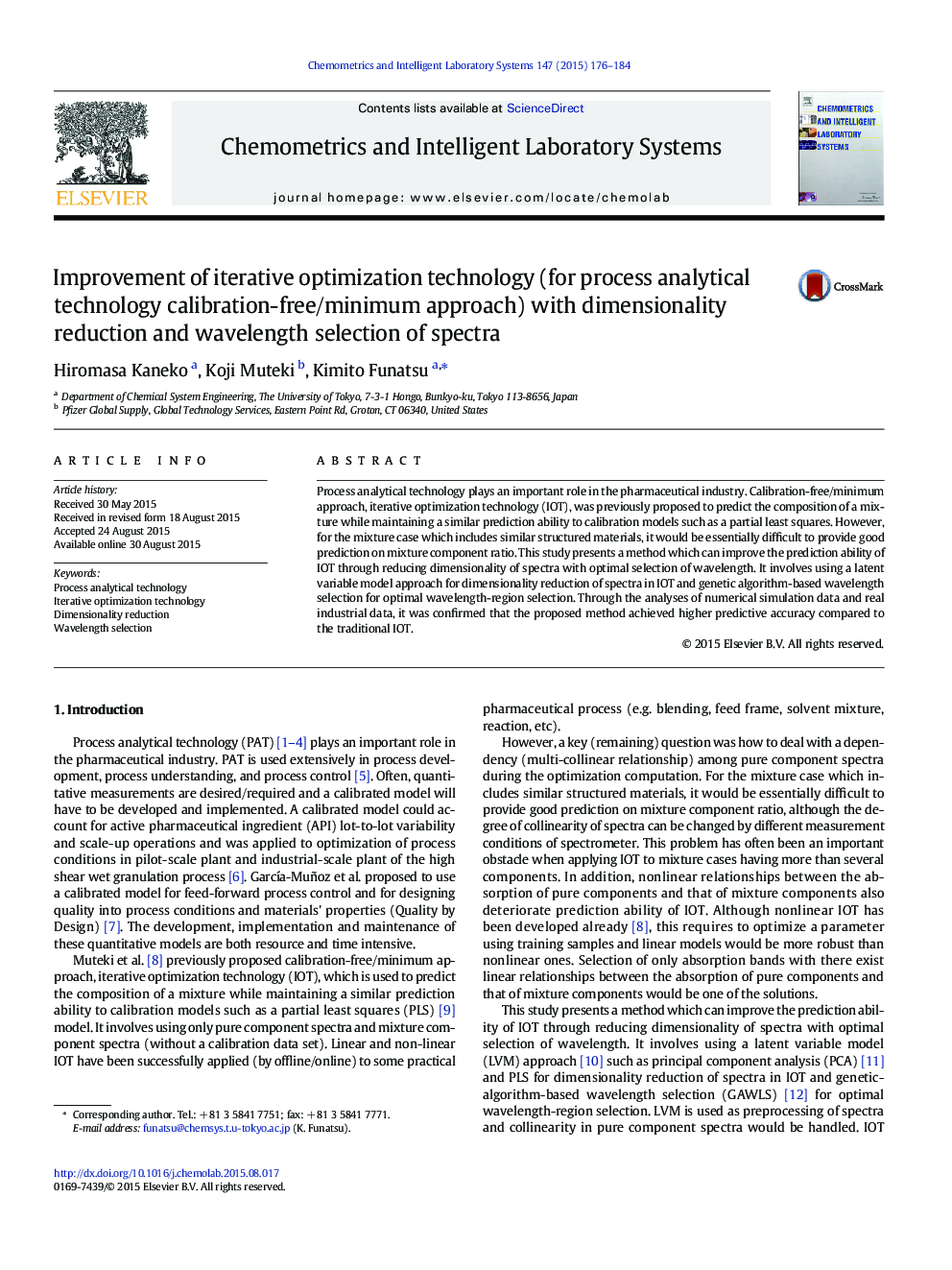| کد مقاله | کد نشریه | سال انتشار | مقاله انگلیسی | نسخه تمام متن |
|---|---|---|---|---|
| 1180379 | 1491531 | 2015 | 9 صفحه PDF | دانلود رایگان |
• Our goal is to improve predictive ability of iterative optimization technology (IOT).
• IOT can predict the composition of a mixture without calibration.
• Latent variable model approach is used for dimensionality reduction of spectra.
• Genetic algorithm is applied to wavelength-region selection.
• The performance is confirmed with a simulated dataset and two industrial datasets.
Process analytical technology plays an important role in the pharmaceutical industry. Calibration-free/minimum approach, iterative optimization technology (IOT), was previously proposed to predict the composition of a mixture while maintaining a similar prediction ability to calibration models such as a partial least squares. However, for the mixture case which includes similar structured materials, it would be essentially difficult to provide good prediction on mixture component ratio. This study presents a method which can improve the prediction ability of IOT through reducing dimensionality of spectra with optimal selection of wavelength. It involves using a latent variable model approach for dimensionality reduction of spectra in IOT and genetic algorithm-based wavelength selection for optimal wavelength-region selection. Through the analyses of numerical simulation data and real industrial data, it was confirmed that the proposed method achieved higher predictive accuracy compared to the traditional IOT.
Journal: Chemometrics and Intelligent Laboratory Systems - Volume 147, 15 October 2015, Pages 176–184
